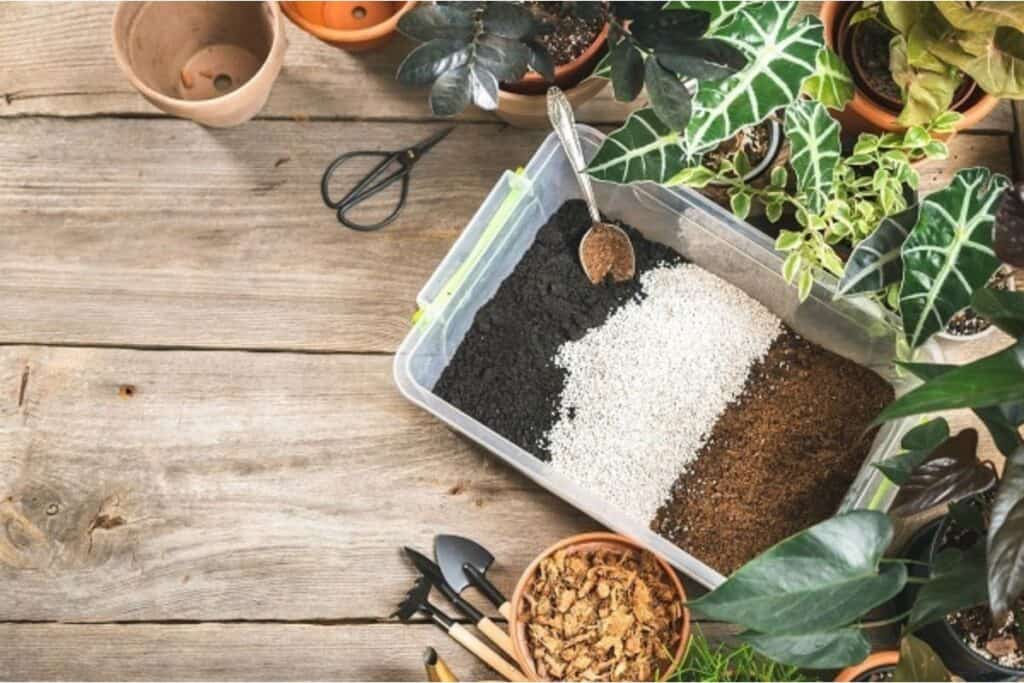Perlite’s volcanic origins make it a powerhouse additive for indoor gardening success. This lightweight white material creates significant air pockets in potting soil, preventing the dense conditions that often lead to root problems. “Perlite is like adding tiny air bubbles to your soil mix,” explains botanist Dr. Sarah Chen. “It’s essential for proper drainage and root development.” While many gardeners know about basic potting soil, understanding perlite’s specific benefits reveals why expert growers consider it indispensable.

Contents
What Makes Perlite Essential for Indoor Plants
Nearly every indoor gardener can benefit from incorporating perlite into their potting mix, as it addresses several essential growing challenges. This lightweight volcanic material offers distinct perlite advantages that transform ordinary potting soil into an ideal growing medium.
The primary benefit lies in how perlite creates vital air pockets within the soil structure, preventing compaction and supporting root health. “Proper aeration and drainage are fundamental for preventing root rot,” explains botanist Dr. Sarah Chen. “Perlite’s porous nature allows roots to access both oxygen and water efficiently, creating an optimal balance for healthy plant growth.”
Creating the Perfect Perlite Soil Mix

Understanding the right soil mix ratios helps indoor gardeners achieve ideal growing conditions for their plants. While there are perlite alternatives like pumice or vermiculite, perlite remains the most effective choice for improving soil texture and drainage.
For most houseplants, use this basic ratio:
- 2 parts quality potting soil
- 1 part perlite
- 1 part coconut coir or peat moss
“The key is adjusting these ratios based on your plant’s specific needs,” explains botanist Dr. Sarah Chen. “Moisture-loving plants need less perlite, while succulents and cacti benefit from up to 50% perlite in their mix.”
Common Mistakes to Avoid When Using Perlite
While perlite offers numerous benefits for houseplants, gardeners often make several critical mistakes when incorporating this volcanic material into their potting mixes.
Common errors include improper perlite storage in damp areas, which can lead to premature degradation, and using incorrect ratios when mixing with soil. Some gardeners mistakenly substitute perlite alternatives like vermiculite without considering their different properties and moisture retention characteristics.
Additionally, many fail to pre-moisten perlite before use, resulting in excessive dust, or apply it to plants that prefer dense, moisture-retaining soil. Understanding these pitfalls helps guarantee ideal results when using perlite in houseplant care.
Plants That Benefit Most From Perlite
Certain houseplants thrive exceptionally well with perlite-enhanced soil mixtures, particularly those susceptible to root rot or requiring superior drainage. Succulents, cacti, and orchids benefit greatly from different perlite types mixed into their growing medium, as these plants need quick-draining soil to maintain ideal root health.
Plants with delicate root systems, such as African violets and peace lilies, also show notable improvement when grown in perlite-enriched soil. “The addition of perlite creates essential air pockets that prevent water-logging and promote healthy root development,” notes botanist Dr. Sarah Chen of the Indoor Plant Institute.
